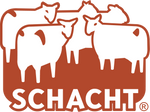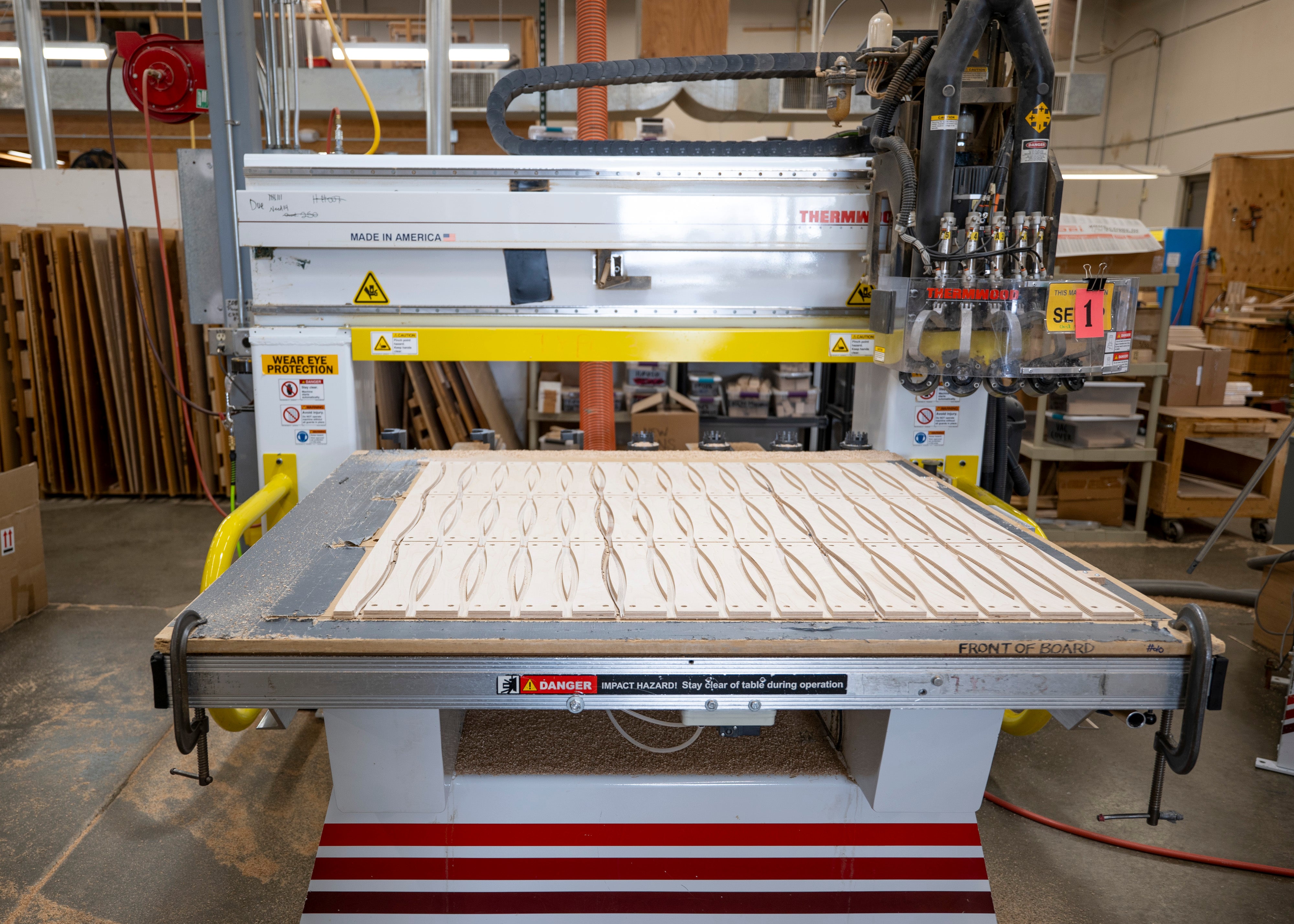By Cindy Lair
In the previous installment “Cut Off” I mentioned CNC (computer numerical control) as a reason our cut off saw needed upgrading. The precision and accuracy must match to make parts efficiently. CNC machines share a fascinating history with weaving looms.

Jacquard looms used numerical control, originally punch tape, to create intricate woven patterns in silk, notably, tapestry, brocade, and damask. Charles Babbage furthered the use of punch tape in his analytical engine, as did Ada Lovelace, eventually resulting in computers today. G-code replaced punch tape, which is a language, modern computers use to locate and perform functions.
CNCs come in all shapes, sizes, and capabilities, ours are specific to three axis woodworking, operating on X, Y, and Z. The actual machine consists of a flat aluminum table with channels cut in the surface to allow airflow for the vacuum. The second layer is a medium density fiber board machined to an X, Y plane, where Z equals zero. This crucial surface is overlayed with an interchangeable board or jig, fixtured for specific parts. Underneath the table, are supports with rails, allowing the table to move forward and back in the Y axis. The table has a bridge which accommodates the X axis, for movement across the machine. The bridge also holds the tool holder which functions in the Z axis, up or down in relationship to the tables X, Y plane. The tool holder is automated. It resembles an old typewriter, holding five tools in separate holders. Tools replaced automatically off the back of the table are ready for use.

The jig boards clamp to the table surface for position accuracy. The table system has vacuum pumps to hold machined parts in position. Altitude affects the ability of the vacuum to provide enough suction, we use additional ways to overcome this issue. The first is a wedge system, parts wedged in place against a block. The second system is onion skinning, this leaves the lower surface of the piece intact, so the vacuum has an adequate surface to grasp. The onion skin is removed via a secondary rout.
A CNC machine is capable of drilling, routing, and milling functions, in varied materials. Accommodations made for these materials based on feed (how fast the material moves) and speed (how fast the tool is moving). Woodworking requires consideration of grain. Tools are mostly right-handed. A piece of wood requires from the center onward a left-handed tool coming from the opposite direction, to not tear out the grain.
The process begins in CAD (computer aided design) with a drawing made of the part, including operations and tool paths. The CAM (computer aided machine) portion of the software translates the drawing into G-code or M-code instructions. These instructions go to the machine on the production floor.
We use five CNCs with the goal of making our production faster and more accurate. We use the CNCs to do high volume production runs, complicated parts that would be difficult with traditional woodworking machinery and product development.
For example, if we made the 4 legs with a traditional drill press, it would take eight days to complete four hundred individual legs, making one hundred looms. This would only include hole drilling. Now, with the CNCs capabilities we can run two full sets in one half hour, revolutionizing our efficiency. Complex parts such as Flip sides would be next to impossible on an overhead router. In addition, our plywood products that could be shaped on a shaper would not result in an efficient use of material. Although CNCs can accomplish an extraordinary amount of work, often parts need specialized operations. Stay tuned…
Cindy Lair is retiring after 36 years at Schacht. She has a few more installments to her “how we make products” series that we will run over the next few months. Thanks Cindy. You will be missed.

